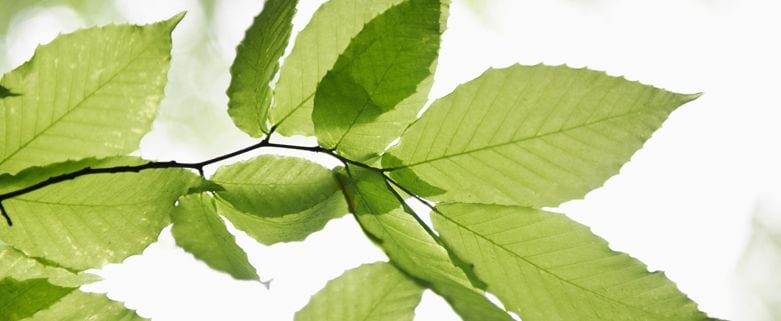In the words of Paul Westlake, co-owner of botanical skincare company Evolu, “Delving into the realm of what exactly defines a ‘green’ beauty product is like dancing on the head of a pin.”
When it comes to cosmetic products, the definitions of “natural” and “organic” have become blurred as the trend for skincare derived from nature gains momentum. In fact, it’s the fastest growth category for skincare worldwide. Consequently, the terms “natural” and “organic” are more often used as a marketing ploy – dubbed “greenwashing” – than a conveyor of truth.
TOXIC COCKTAIL
As the body’s largest organ, the skin acts as a shield against the external environment.
However, it is a porous protector, which allows some substances to enter and keeps others out.
Over the past two decades consumers of cosmetics have been warned how easily chemicals can be absorbed through the skin, yet it is only now that we are beginning to truly understand the impact on our health and wellbeing of applying this chemical cocktail.
While a cosmetic product may contain minute amounts of toxic ingredients, it is the cumulative effect of using various such products regularly that causes concern. According to the Environmental Working Group (EWG), a non-profit public-interest organisation based in Washington DC, the average lipstick wearer consumes 1.8kg of lipstick in a lifetime.
As consumers become more savvy about the cosmetics they buy, the demand for products that are free from synthetic chemicals has increased. In turn, the market has become saturated with companies wanting to benefit from this demand. What was once perceived as marginalised groups of environmental fundamentalists making “green” beauty products is now seen as a marketing opportunity by cosmetics companies wanting to cash in.
LABEL MISUSE
There are no rules in place to stop cosmetics companies misusing terms that may benefit their sales. “Natural” or “organic” may be on a label but that doesn’t guarantee the product is either one of those things. In fact, a product may boast that it is “natural” simply because it contains one or more plant-derived ingredients, but it may contain synthetic substances in the base formula. Some companies choose to label and promote a product as “organic” even if it contains just a small amount of organic ingredients – as little as 1 per cent.
Cosmetics companies are free to misuse such terms thanks to this virtually unregulated area of the cosmetics industry. In New Zealand, Australia and the European Union there are no specific laws or an official government-regulated definition that governs the terms “natural” or “organic” when describing a personal care product. An international standard to determine what these words mean is yet to be established.
Instead there are groups, associations and organisations that have set their own standards and developed their own definitions and accompanying logos, making it more confusing for consumers and manufacturers. In the absence of any regulation there are multiple interpretations of what “natural” and “organic” mean around the world.
NO GLOBAL STANDARD
While the need for an international standard was addressed at the annual Natural Beauty Summit (which began in 2007 to consider developments in the cosmetics industry concerning natural products) and progress is being made, reaching a conclusion seems a long way off.
An attempt led by the European Cosmetics Standing Working Group to find harmonisation between private certification bodies has been in discussions for six years and is yet to come to a conclusion. The initiative is known as COSMOS (cosmos-standard.org).
Frustrated with unsuccessful attempts to find a solution, the NaTrue company broke away from COSMOS in 2008 to create its own labelling system, the NaTrue-Label.
The NaTrue-Label provides consumers and manufacturers with transparent and strict criteria for “natural” and “organic” cosmetics.
“Eventually I hope to see clarity for consumers globally,” says Julie Tyrell, secretary general of NaTrue. “There needs to be a label that acts as a blueprint for formulators. That would mean only authentic natural and organic products would be on the market.”
PRESERVATIVES: DO WE REALLY NEED THEM?
Preservatives are designed to extend the longevity of cosmetic products and to help keep them free from yeasts, moulds and bacteria, which could pose a threat to human health.
Natural beauty products that contain oils and oil-based ingredients, such as balms and body butters, can be made using 100 per cent natural ingredients and do not require preservatives. To prevent oxidisation, however, a mild antioxidant, such as tocopherol (vitamin E oil or rosemary oil) or ascorbic acid, that is permitted under organic food standards and is naturally derived may be used.
Products that contain water and water- and oil-based ingredients, such as creams, lotions and shampoos, need some form of preservative.
Often, natural preservatives, such as grapefruit seed extract, can be used, however, these are not always stable, effective or commercially available so another preservative is often necessary.
COMMON DEFINITIONS
NATURAL
Natural ingredients include plant, animal, mineral or microbial ingredients that are present in or produced in nature. They should be produced using minimal physical processing or directly extracted using simple methods, simple chemical reactions or naturally occuring biological processes. For a cosmetic product to be labelled “natural” it should be composed of at least 90 per cent natural ingredients, according to New Zealand’s Cosmetic, Toiletry and Fragrance Association (CTFA) standard.
ORGANIC
Organic ingredients are grown without the use of herbicides, pesticides, fertilisers and other harsh chemicals commonly used in mass production. Organic ingredients are shown to be less waste producing, more energy efficient and better at sustaining diverse ecosystems than conventionally produced ingredients. Current labelling laws allow products with as little as 1 or 2 per cent organic ingredients to be labelled “organic”, so organic certification is the only way you can be sure a cosmetic product has been produced in the purest way possible.
CERTIFIED ORGANIC
Certified organic personal care products have been assessed by an independent body and are guaranteed to contain 100 per cent natural ingredients, 70 to 95 per cent of which must be certified organic. Strict international criteria govern the remaining ingredients.
PRODUCT LABELLING
The International Nomenclature of Cosmetic Ingredients (INCI) is the only system that gives consumers complete assurance of clarity and disclosure on cosmetic product labels. It mandates:
– All ingredients used in the manufacture of products are clearly marked on labels so consumers can make informed decisions about the products they are purchasing.
– No ingredients are omitted from the labels on products.
– All ingredients are listed in descending order of inclusion.
THIRD PARTY ACCREDITATION BODIES
In the absence of an international standard there are many third-party accreditation bodies that have developed their own criteria for what determines “natural” and “organic” products. Their logos help to substantiate the label’s claim. While all of these bodies have incomparable standards, they provide consumers with guidance and the ability to research what it is exactly that they are buying and putting on their skin.
SOIL ASSOCIATION
The Soil Association guarantees the product has been checked and meets the strictest standards for organic purity and integrity. Its standards are based on principles that require the maximum amount of organic ingredients, minimum synthetic ingredients, minimum processing of ingredients and clear labelling so the consumer can make an informed choice about the product they are purchasing. Ingredients must meet strict criteria to ensure they are not damaging to human health or the environment.
ECOCERT
French institute ECOCERT is an internationally independent institute for product testing and certification. It operates in 85 countries and is recognised by the French Government as the official state certification authority for ecological products. Its seal is one of the strictest for natural cosmetics.
BIOGRO
One of New Zealand’s leading organic certification agencies, BioGro is accredited by the International Federation of Organic Agriculture Movements (IFOAM). Its systems are reviewed by IFOAM to ensure compliance with global standards. Primary producers must pass three stages before their operation is certified organic.
ASUREQUALITY
AsureQuality is an independent government regulatory body and the leading provider of food safety and bio-security services in New Zealand. The AsureQuality Organic mark gives consumers confidence that the product they are buying has been produced to organic principles at all stages of production, from the farm to the store. The aim is to protect consumers from deception and fraud in the marketplace concerning unsubstantiated product claims.
BDIH
An internationally recognised organisation based in Germany, BDIH’s guidelines for natural cosmetics are among the most selective in the world. Its Certified Natural Cosmetic seal on packaging assures consumers of the purity and authenticity of the natural products they purchase.
kontrollierte-naturkosmetik.de
NATRUE
NaTrue is non-profit and aims to safeguard the highest possible standards for natural cosmetics and their ingredients. The NaTrue-Label defines transparent and strict criteria for “natural” and “organic” cosmetics to help consumers and manufacturers. It guarantees independent certification based on publicly accessible criteria.
ACO
Australian Certified Organic (ACO) is Australia’s largest certifier of organic and biodynamic produce. For a cosmetic product to be certified organic and to have the ACO logo it is required to have a minimum of 95 per cent certified organic ingredients.







